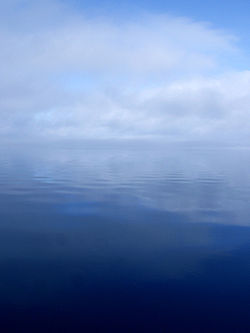The Composition of the Atmosphere
Take in a deep breath of air. The number one way you interact with the atmosphere is by breathing air. The component of air that is the most important to your body is oxygen. Because of Earth’s oxygen-rich atmosphere, all animal life on Earth, including human life, is able to exist. Oxygen is an essential component of the red blood cells in our bodies. It is necessary for all of our metabolic functions, but oxygen is only about 21 percent of the air that we breathe in. The atmosphere is a mixture of gases, water vapor, and particulate matter. Click through the tabs below to learn about these three components of the atmosphere.
Gases

The atmosphere is mostly a mixture of the gases you see here. The pie graphs show the major and minor gases in Earth’s atmosphere. In the top graph, you see the major gases of nitrogen (N2), oxygen (O2) and argon (Ar). In the bottom graph, you see the minor, or trace gases, of carbon dioxide (CO2), neon (Ne), helium (He), methane (CH4), hydrogen (H2) and krypton (Kr).
Water vapor

Depending on environmental conditions, water vapor is another trace gas that is in Earth’s atmosphere, but its relative concentration can vary from almost zero to four percent. Humidity is a measure of the amount of water vapor in the air at any given time. This value varies from place to place, and with air temperature, season of the year, and daily weather conditions. Warm air can hold more water vapor than cool air, because lower temperatures encourage condensation, or the phase change of gaseous water to liquid water. Regions of higher humidity tend to form over large bodies of water and densely forested regions because of evaporation (the phase change of liquid water to gaseous water) at Earth’s surface. The driest air is generally found in the cold Polar regions. The condensation of water vapor is responsible for clouds, rain, snow, and other precipitation on Earth. Water vapor cycles on Earth—that which is lost by precipitation is replenished by evaporation of liquid water from the oceans and seas.
Particulate Matter

Particulate matter is made of tiny solid particles or liquid droplets suspended in air. Particulates can include dust, pollen, and volcanic ash, and can come from natural sources, such as volcanoes, dust storms, or forest fires. They may also come from human-made sources, such as pollution from a factory or vehicle emissions. Elemental mercury is one particulate that comes from industrial emissions and is considered a serious air pollutant. You will learn about air pollution and the effects of particulates later in this unit, but for now, know that increased levels of particulates in the atmosphere are related to serious health threats. Pollution can become trapped in the lungs and particulates can scatter incoming solar radiation, resulting in decreased solar radiation making it to Earth’s surface.